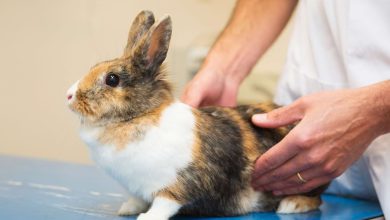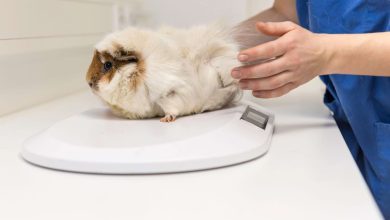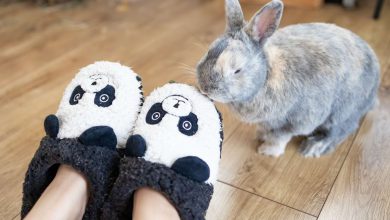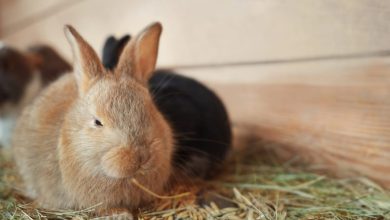Kakariki Parrots – Simple Guide To Care & Personality + Tips
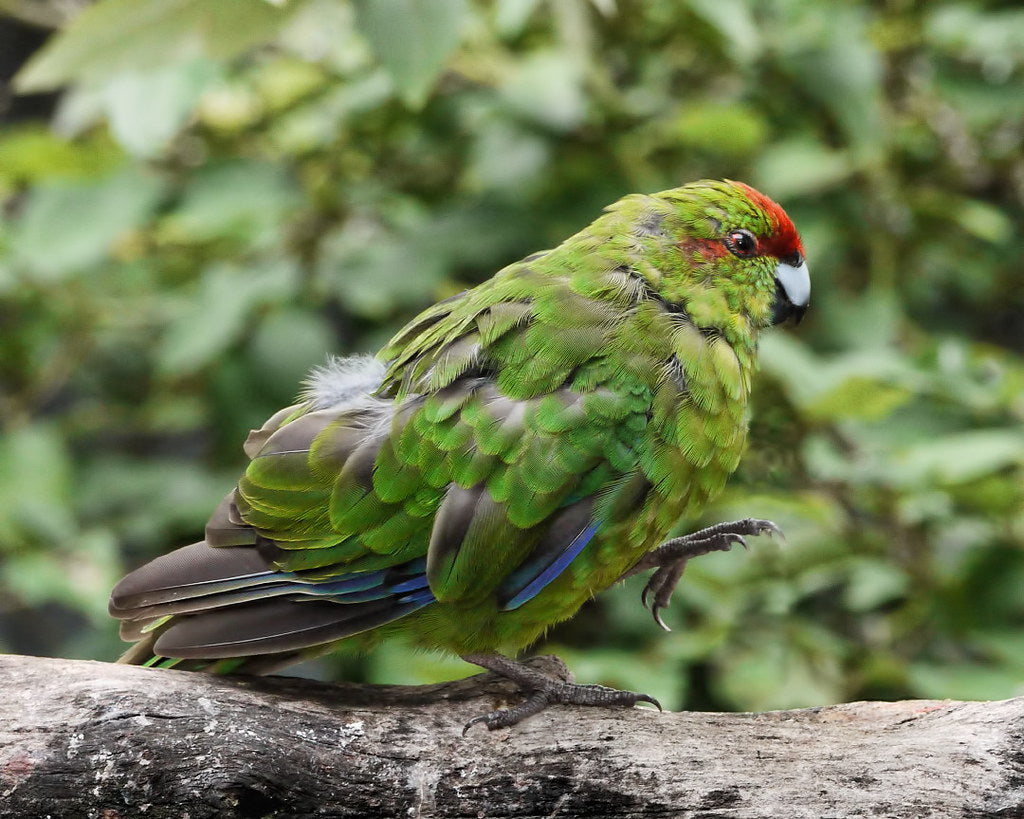
These small birds will make your home feel like a tropical paradise with their vibrant green plumage and beautiful voices.
And…
As well as being aesthetically pleasing, they make great pets thanks to their friendly personality and are both intelligent and entertaining. You’ll have lots of fun teaching them how to talk and learn tricks.
If the kakariki bird already sounds like the right pet for you, read on to learn more about how to care for them.
Kakariki Parrot Overview
The kakarikis name literally means small parrot and comes from Maori language: kaka (meaning parrot) and riki (meaning small). The popular parrot has two color variations with their own scientific names; cyanoramphus novaezelandiae (red-fronted bird) and cyanoramphus auriceps (yellow-fronted bird).
The red-fronted kakariki has an entirely red crown whereas the yellow-fronted kakariki has a mix of yellow and red. There are also hybrids which are a mixture of the two-colour patterns so your kakariki’s colourings can be unique and make the bird easy to recognise amongst other kakariki birds.
The two variations are also native to different parts of New Zealand. The red-fronted kakariki used to be indigenous to the mainland but is now almost extinct there and more likely to be found on surrounding islands like Stewart Island. The yellow-fronted kakariki on the other hand can be found more readily on the mainland.
Both variations are currently vulnerable in the wild due to loss of habitat, especially the red-fronted kakariki. But they are now protected and numbers are slowly increasing. Similar breeds include the black headed caique and the jenday conure.
Characteristics Of The Kakariki Bird
Physical
When fully grown, the adult kakariki parrot measures 25-28 cm and weighs around 65 grams. They have a wingspan of around 5 inches. Generally, they are described as a bit chubby looking with cute fluffy green feathers all over and those distinctive red and yellow crowns. They are certainly one of the cuter looking pet parrots with their small heads and beaks atop puffy bodies. They also exhibit beautiful blends of blue and green feathers around the wings.
Behavior
If you are looking for a smaller bird which doesn’t create a lot of noise the kakariki is a great choice as a pet. Although quiet, they can come out with a range of noises, words and imitations which make them great fun to live with. They are intelligent and able to learn words quickly so you can teach this cheeky bird a range of words and phrases. They also live around 15-20 years which is a lot less than a larger parrot but still a considerable commitment.
Raising A Kakariki As Pets

Personality
As pets, kakarikis are great fun and have really entertaining personalities. Being intelligent, they are able to learn words and mimic a lot of sounds including your favorite songs. They are also just as lovable as they look and like to cuddle up to their owners.
Of course, with such perky personalities they’ll need plenty of attention to keep them entertained so make sure you spend time playing with them and give them a range of toys to keep them occupied when they’re alone. Like most birds, the kakariki bird needs a few hours a day out of the cage and almost constant stimulation to avoid boredom so it is important to introduce new toys to them regularly.
They particularly like toys made out of paper or acrylic which they’ll enjoy shredding up. A lot of these toys you can make at home with some simple material. Kakariki parrots can bond closely with their owner so it is important to socialize them with the whole family if you want them to form bonds with more than one person. If they bond with one family member, they can be nippy and aggressive towards others so be careful with young children.
Training
Their level of intelligence makes them very easy to train. Just don’t get frustrated if they only want to pay attention for 15-20 minutes at a time, training takes daily commitment and they will only want to do one thing for a short amount of time before they get bored. If you have the patience, you can easily teach them how to speak, dance and imitate other sounds and songs.
Home Type
These smaller and quiet birds are ideal for smaller homes and apartments as they won’t disturb your neighbours. As sociable flock animals, it is a good idea to buy more than one or two so you will need a decent sized cage to house a few of these birds. If you are only planning on buying one, make sure you dedicate a lot of time and attention to it.
Experience Level Required
These smart and lovable birds are easy to train and affectionate towards their owners so they are great for first time bird owners. Just make sue you read up on everything you need to know about the kakariki as pets. Remember that they aren’t easy pets and demand just as much, if not more, attention than dogs and cats so don’t buy one if you’re looking for a no fuss pet.
How To Care For Kakariki As Pets

Cage Size
As a form of parakeet, kakarikis require cages with bar spacing of ½ inches and their cage needs to be at least 18 inches in width by 18 inches in depth and 24 inches in height. There are a range of bird cages you can choose from and make sure you purchase a larger cage if you are adopting more than one kakariki.
They also need a range of cage toys to keep them occupied including wood and rope toys to climb on and cardboard and paper toys that they can rip up. This means you don’t have to rush out and buy a load of toys, you can make your own out of old materials and your kakarikis will love them just as much as store bought toys.
Diet
Commercial parakeet mixes give your bird a good combination of their natural food sources including seeds, flowers and leaves. Make sure your parakeet mix contains sunflower and safflower. Like most parrots, they can also eat a range of safe fruits and vegetables including apples, strawberries, broccoli and carrot.
You can also forage for foods outside such as seeding grass and dandelion leaves. If you happen to have a garden full of plants you might be able to pick out some food for your kakariki parrot right at home.
Breeding
Kakarikis are relatively easy to breed compared to other species of parrot. They will bond with a partner for life so as long as your two kakarikis get along you can expect successful breeding. Breeding usually takes place in the spring. They can lay up to 13 eggs which take 19 days to incubate. Make sure you provide a safe nest box in the cage which is large enough for two full grown kakarikis.
Exercise
Like most parrots, kakarikis need several hours a day outside of their cage. They also love baths so filling up your sink with some water while they are out of the cage will give them plenty of entertainment. As mentioned, they will also need a range of toys to keep them occupied while they are in their cage and plenty of attention from their owners.
Price
Depending on the breeder, you can get a kakariki as a pet for around 200 USD. Parakeets cost around 20-800 USD. The price can differ a lot depending on the breed and their popularity. Make sure you always buy from a reputable breeder to avoid illegal traders.
Health
In terms of health problems, kakariki birds are relatively low maintenance, hardy pets. Illegal breeding can lead to birth defects such as kidney problems or blindness, but as long as you adopt from a reputable breeder you don’t need to expect these problems. A key indicator that your bird is sick is changes in behavior such as loss of appetite or lack of energy so make sure you take your bird to a vet if you notice your kakariki is acting peculiarly.
Comparable Species
If you are interested in the kakariki but want to see some similar species, check out these birds:
- Black headed caique
- White bellied caique
- Jenday conure
- Sun conure
Summary
So, should you adopt a kakariki? If you are a first-time bird owner, the kakariki makes a great choice of pet because it is relatively easy to care for and breed.
If you are looking for a bird that won’t cause too much hassle, this is one of the best options out there but remember that adopting any type of parrot is still a big commitment.
